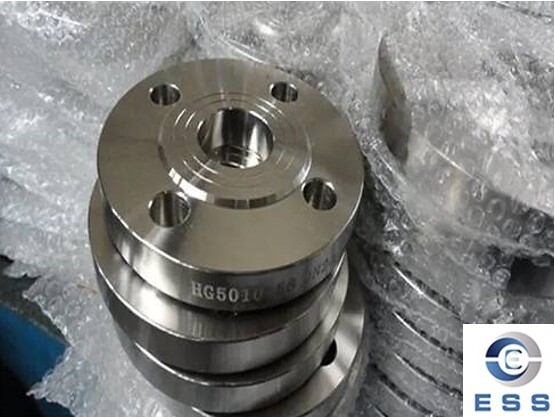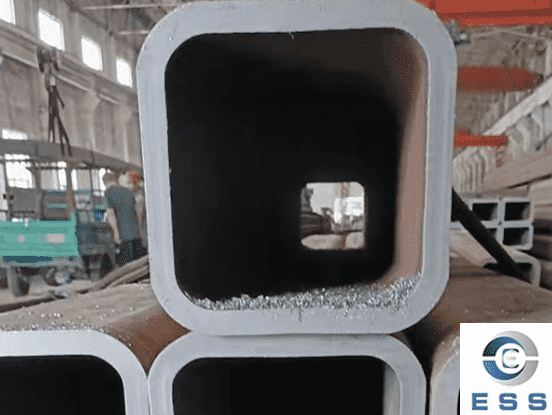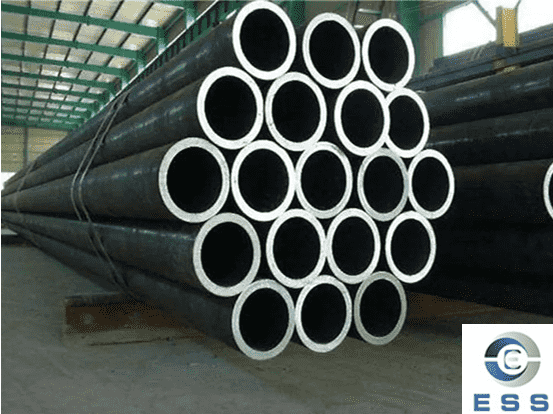
In industrial production and fluid pipeline
connection, flat face pipe flange and
raised face pipe flange are two common flange connection forms.
The sealing surface and flange surface of
the flat face pipe flange are flat, and the connection between the sealing
surface and the flange surface is achieved by tightening with screws, and the
sealing gasket or filler is compressed on the two flat surfaces.
The sealing surface and flange surface of
the raised face pipe flange are arc-shaped, and the sealing surface and the
flange surface are connected with screws, and the sealing ring or filler is
compressed along the arc surface to achieve sealing.
Similarities between flat face pipe
flange and raised face pipe flange
Flat face pipe flange and raised face pipe
flange have common characteristics in basic functions and connection
principles. They are both used for the connection of pipelines or equipment to
achieve sealed transmission of fluids. In terms of connection methods, they are
fixed and sealed by bolts and gaskets. The materials are also similar, usually
using general materials such as carbon steel and stainless steel, and are
selected according to working conditions. So what are the differences between
them?
Differences between flat face pipe
flange and raised face pipe flange
1. Different sealing methods
The sealing method of flat face pipe flange
is relatively simple, using sealing gaskets or packings to seal on the flat
surface, while raised face pipe flanges use arc-shaped sealing rings or
packings to seal on the raised surface, and the sealing performance is better.
2. Different fastening methods
The fastening methods of flat face pipe
flange and raised face pipe flange are also different. Flat face pipe flanges
need to use bolts to fasten the flange and valve together,
while raised face pipe flanges also need to use bolts for fastening, but due to
the use of sealing rings, the fastening force needs to be stronger than that of
flat face pipe flanges.
3. Different manufacturing costs
Because raised face pipe flanges need to
use sealing rings or packings and use higher precision processing, their
manufacturing cost is higher, while flat face pipe flanges only need to cover
the flat surface with sealing gaskets or packings, and the manufacturing cost
is relatively low.
4. Different usage scenarios
Flat face pipe flanges are often used for
some low-pressure and non-high-sealing pipeline connections because of their
simple sealing methods and low costs. The raised face pipe flange has better
sealing performance and is usually used in some occasions with high sealing
requirements, such as: connection of high-pressure containers, oil and gas
pipelines, chemical pipelines, etc.
5. Different installation and maintenance
The flat face pipe flange is easy to
install, but it has high requirements for the flatness and cleanliness of the
flange surface. It is necessary to ensure that the gasket is evenly stressed
during installation. The raised face pipe flange needs to be matched with the
concave flange during installation, which has good centering, but the flange
may need to be disassembled when replacing the gasket, and the maintenance cost
is high.
Conclusion
In general, flat face pipe flanges and raised
face pipe flanges have different usage scenarios. When choosing, users can
consider the sealing, fastening method and manufacturing cost according to
actual needs. If you have any questions, you must consult professional or flange supplier to avoid unnecessary losses.













 Eastern Steel Manufacturing Co.,Ltd not only improve product production and sales services, but also provide additional value-added services. As long as you need, we can complete your specific needs together.
Eastern Steel Manufacturing Co.,Ltd not only improve product production and sales services, but also provide additional value-added services. As long as you need, we can complete your specific needs together.










